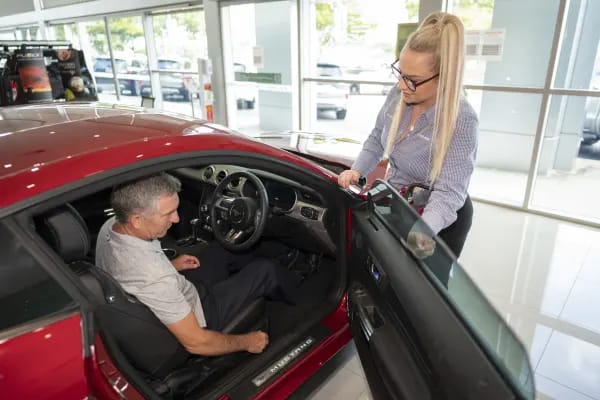
Review: 2016 Kia Optima GT Turbo
Posted in Vehicle Reviews
Review: 2016 Kia Optima GT Turbo
From its launch in 2010, the Kia Optima has always been the David in the battle against the mid-size sedan Goliaths that have dominated the top of their segment for decades.
We took the recently overhauled Optima to see if the battle is still worth fighting.
At the turn of the millennium, Kia started to make a determined effort to improve reliability and quality. However, when they needed a mid-size sedan, the Koreans turned to its sister company and rebadged the Hyundai Sonata as the first Kia Optima in 2001. It didn’t set the world ablaze, with only one V6 engine option and middle-of-the-road styling.
It was quietly replaced by the Magentis in 2006, which was the local name for the much improved second generation – but Kia hadn’t fully established itself and, by killing the fledgling Optima name, the Magentis sold poorly despite coming as part of the first raft of vehicles that were not only good value, but reliable and well-built.
In 2010, Kia brought the Optima name back with a vehicle that was redesigned from the ground up. Based on the same platform as the Hyundai i45, the new Optima was one of the first models designed by Peter Schreyer, the former head of design who is largely credited with turning Kia’s lineup into something that challenges its ‘cheap and cheerful’ brand history.
In 2015, a new model builds on the strength of the car that laid the foundations for Kia’s current reputation for quality and value for money. We jumped in the Optima GT Turbo for a spin.
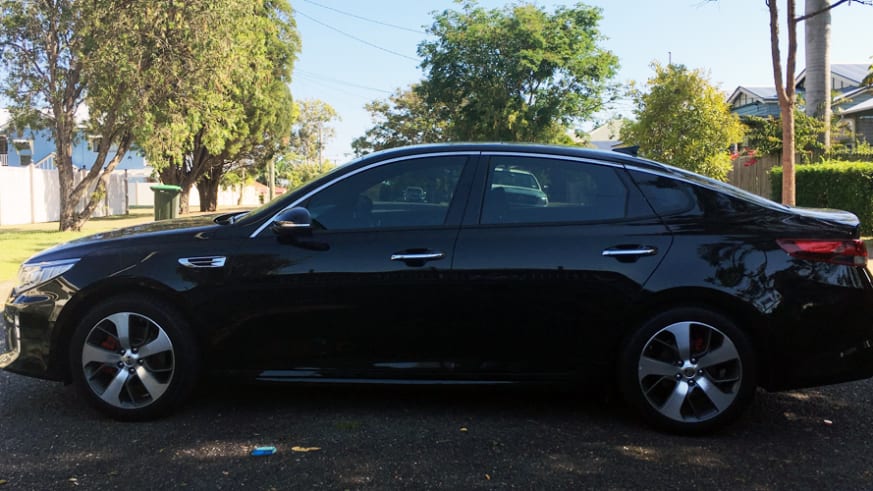
INITIAL IMPRESSION
The GT Turbo is the new top-shelf variant, replacing the Platinum. On the outside, a slight tweak of the style that was launched in 2010 sharpens the Optima’s look by simplifying the ‘tiger nose’ grille, and adding extra lines to the profile to beef up the look of the flagship sedan in the Kia lineup.
Inside, the Optima GT Turbo gets the full premium treatment that you’d expect from a modern, top-shelf mid-sizer, with leather seats, ten-speaker Harmon/Kardon audio system as well as some of the class-leading assistive technology including autonomous braking, blind spot monitoring and lane departure warning.
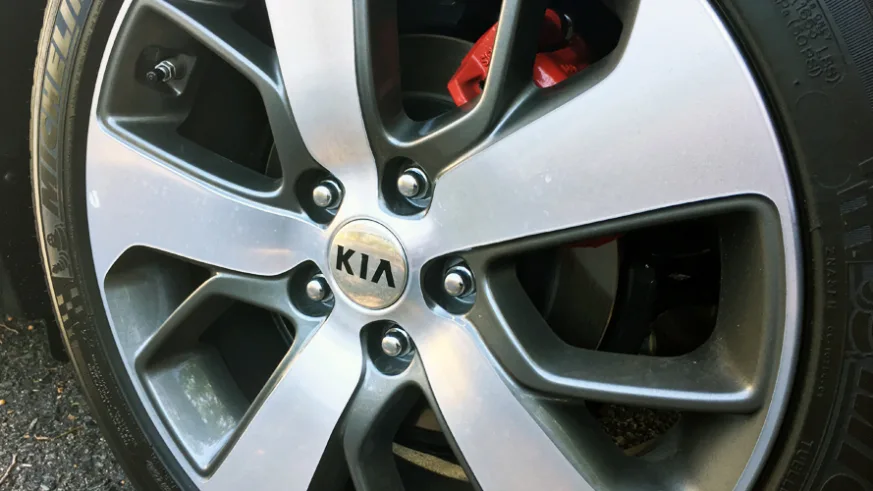
DRIVEABILITY
The Optima comes with two engine options: the 2.4L naturally aspirated engine carrying over from the previous model for the entry level Si, and the spicier 2.0L turbo four-cylinder found in the GT Turbo tested.
Low speeds around town or on suburban streets, the GT Turbo is impressively smooth and manages to feel spirited even when trundling along below 60km/h. Opening up the taps, though, reveals the Optima’s strong suit in the turbo charged engine. With 180kW and 350Nm to play with, the GT Turbo is the most powerful in its class and shows it when let loose on the open road.
Power delivery never feels like it’s uncontrollable, rather it’s an even distribution as you cycle up through the RPM range. The six-speed automatic cycles up and down at appropriate intervals, and the GT Turbo’s tweaked gear ratios over the Si are well suited to swift changes. But this isn’t a car for hooning, although the turbo is quick – it’s more of a fast-paced cruiser to go from work to play in an instant.
This spirited performance brings a breath of fresh air into a class of car that tended to be overlooked as practical rather than sporty.
On the road, the Optima is smooth as silk. The suspension soaks up bumps in the road, without feeling detached from what the wheels are doing. The 18” alloys on the standard Michelin Pilot Sport 3 tyres strike the balance between sporty roadholding and comfortable touring mode – giving good grip, adding to the handling prowess when pushed, but not slippery and ready to race when you’re just driving to pick up the kids.
Compared to rivals, the GT Turbo manages to find the sweet spot as a sprightly mid-size sedan that offers a fresh, new alternative to the long-held segment leaders.

LIVEABILITY
The sedan represents the ultimate symbol of practicality with the best of both worlds: a cabin large enough to hold five adults, space to carry a reasonable amount of kit – while still delivering a driving experience that is reasonably sporty.
The Optima nails these beats in a stylish package, certainly on par with rivals with a premium product without the price tag that usually comes with it.
Particularly in the GT Turbo, the creature comforts are ramped up to match the mid-$40,000 sticker price. Leather trim, quality soft touch materials and premium technology dominate the interior of the top-spec Optima.
Included in the price of entry is a Qi charge mat, which lets you wirelessly charge a compatible smartphone. Just put it on the pad and your phone will charge, as long as it’s enabled with Qi wireless charging technology, found out of the box in some Samsung Galaxy and Nokia Lumia models – iPhone and other smartphone users can buy accessories to become Qi-enabled. (EDIT, Late-2017: Newer models of the iPhone now support wireless charging.)
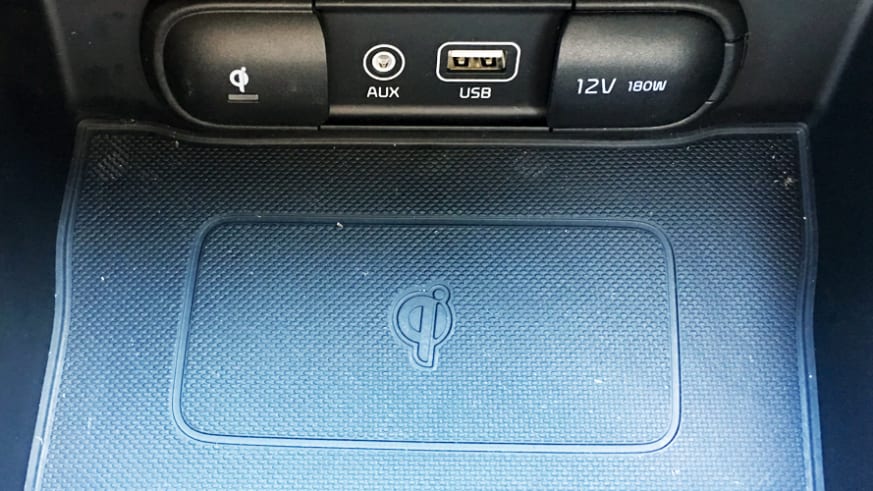
The Harmon/Kardon ten-speaker system is lush, and adds another level of premium into the Optima. The multimedia system could be spruced up a little, it’s a bit sedate, but all the basics including navigation with traffic updates, Bluetooth audio and telephony and iPod control (though not Apple CarPlay enabled.)
The panoramic sunroof opens up the headroom of the low-profile Optima, with an option to just strip the roof lining, or open the glass to the fresh air.
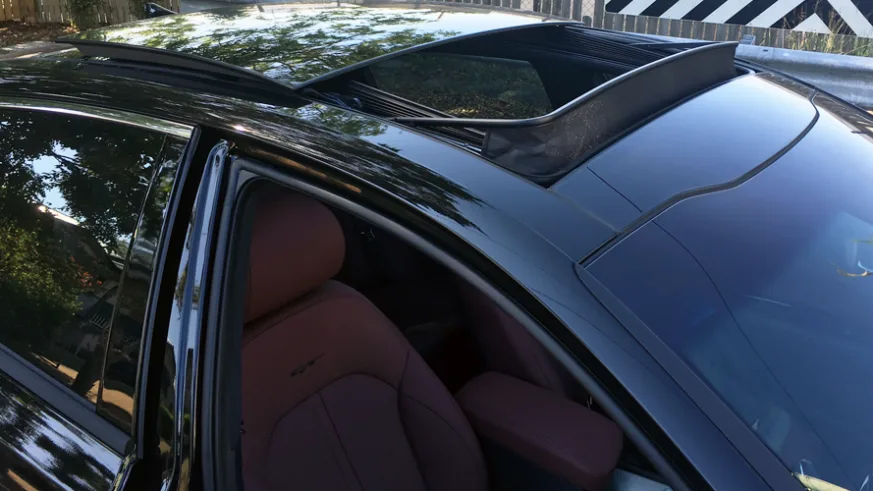
Fuel consumption in the GT Turbo is slightly higher than in its non-turbo stable mate, at 8.5L/100km officially, with 12.5L/100km in the city and 6.3L/100km on longer drives out of the city.
The last Optima was tested back in 2011 for a 5-star ANCAP safety rating. This time around, active safety features are boosted with Autonomous Emergency Braking (a first in the Kia lineup) alongside Blind Spot Detection, Lane Departure Warning and Rear Cross Traffic Alert. While the current Optima has not yet been tested, the vehicle with which it shares its platform – the Hyundai Sonata – was tested and received a 5-star safety rating. This rating should only be used as an indicator, because the Sonata also doesn’t include some features of that are found standard on the Kia.
Overall, it’s the little things that make the Optima such good value. Premium touches including push-button start, the contrasting red leather seats and panoramic sunroof come together to create a high quality product that’s not only functional, but also stylish to boot.
COST
The Optima range starts at $34,490 for the entry model Optima Si and comes with a fair whack of kit standard, although the GT Turbo adds even more starting at $44,990. By offering it in only two grades, Kia has been able to focus on creating a premium product – so while it may be thin on the ground in terms of customisation, what you do get is already pretty decent.
Recommended retail prices only exclude on-road costs such as dealer delivery, registration and stamp duty.
The Optima comes with Kia’s seven year, unlimited kilometre warranty alongside capped price servicing.
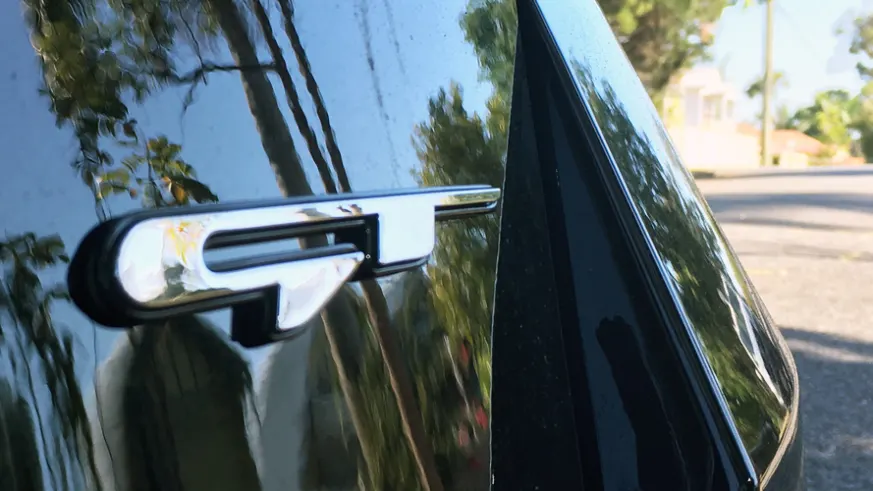
CONCLUSION
Strengthening the Optima is generally the opposite of where other car brands are going. While some are ditching traditional five seater vehicles in favour of SUVs, a few key players have dominated the mid-size sedan – so other brands have generally given up on it.
However, instead of abandoning the Optima – Kia has strengthened their offering to create real competition amongst challengers who are generally rusted on to their positions in the sales chart.
Test drive the new Optima at Motorama Kia in Moorooka or Browns Plains-Hillcrest to see what the upstart mid-size sedan has to offer.
SEE ALSO...
Toyota Camry [Atara SL grade]
Holden Commodore [SV6 grade]
Nissan Altima [Ti grade]
Ford Mondeo [Titanium grade]


